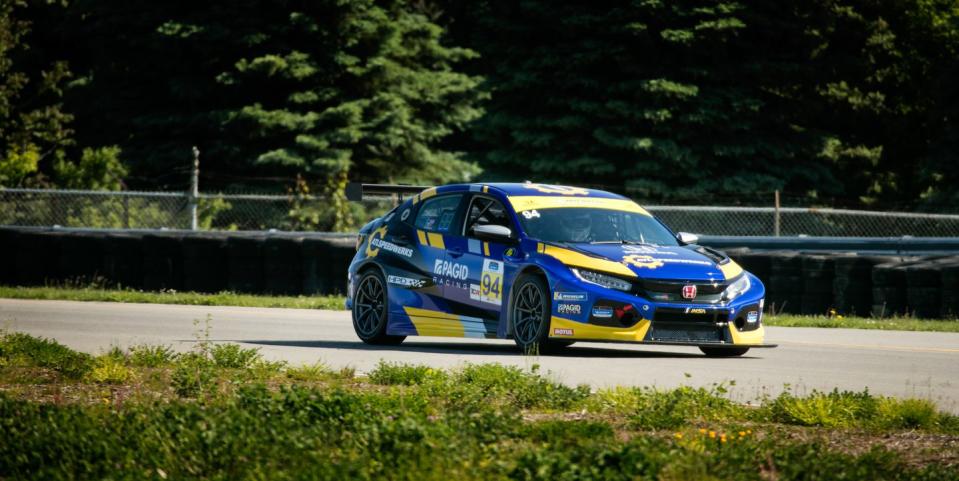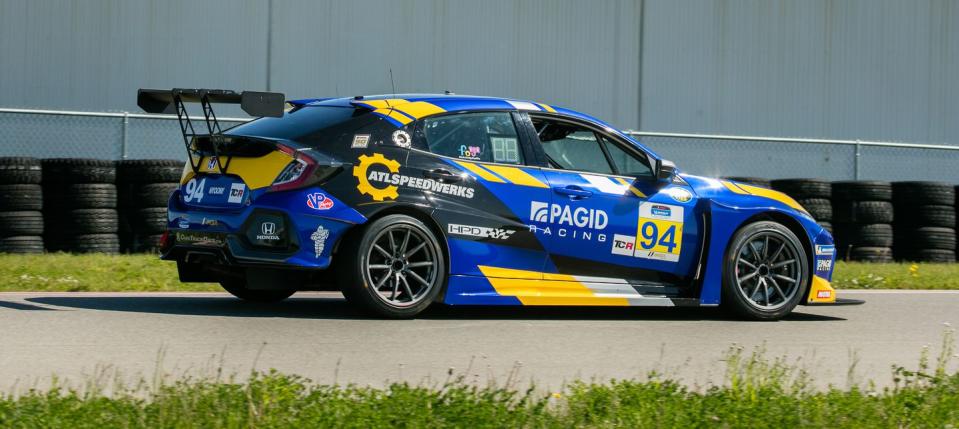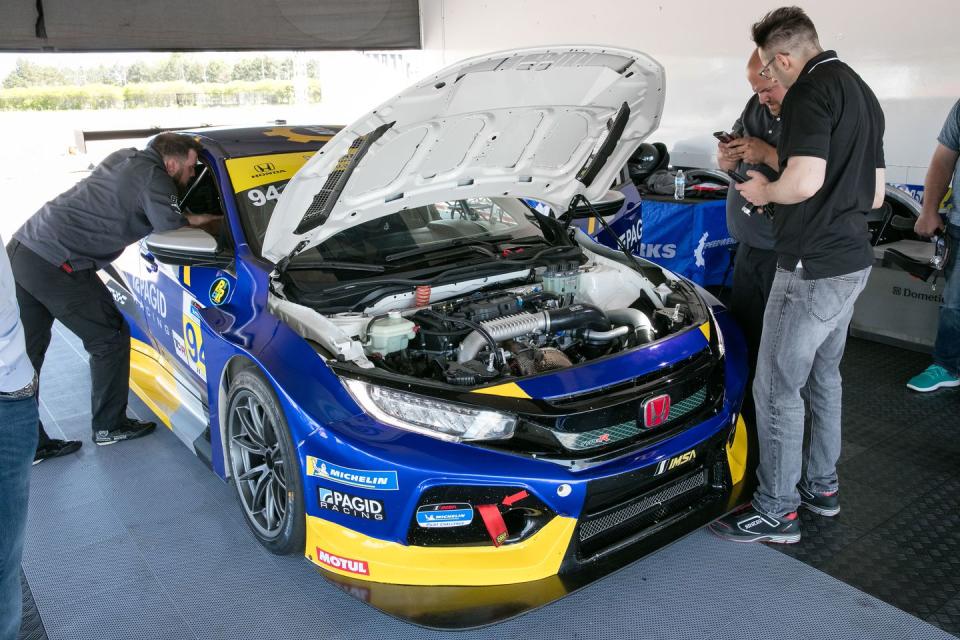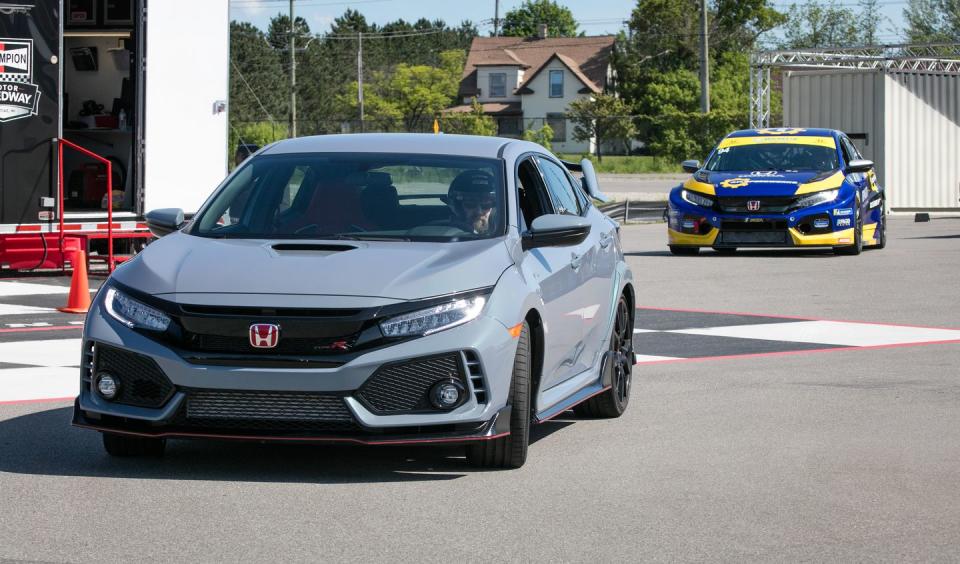The 2019 Honda Civic Type R TCR Race Car Is the Hot Hatch We Need in Our Lives

Do you remember that scene in Days of Thunder when Rowdy Burns reluctantly allows Cole Trickle to drive his NASCAR race car? Well, we just had that real-life experience. The owner of Atlanta Speedwerks and driver of the No. 84 Honda Civic Type R TCR racer, Todd Lamb, is the Burns to our Trickle in this analogy. While we've just met Lamb, we can tell you he is nothing but a gentleman because he didn't so much as flinch when a half-dozen or so journalists showed up to rip his car—a sister to the No. 84 car that he and Brian Henderson campaign in IMSA's Michelin Pilot Challenge—around the 1.5-mile, 11-turn M1 track in metro Detroit. He surely didn't do this to improve his own health, but he certainly didn't have to, either. Driving someone else's race car is a touchy thing that was so perfectly captured by that classic '90s racing flick: You must drive quickly enough to make an impression and not embarrass yourself, yet not so recklessly as to end up in the grass or crumpled against a wall.
Yet, despite our analogy, the Type R TCR is nothing like an old stock car built in a barn. The 2019 Civic Type R–based TCR is born in England, assembled in Italy, and raced all over the world with the heart of an American. Body shells come from Honda's Civic hatchback factory in the United Kingdom, and engines come from Ohio. Both are shipped to J.A.S. Motorsports in Italy, where the racing firm assembles and fabricates the remaining components. J.A.S. seals the engines because the TCR formula is meant to be a regulated spec affair. (There are, of course, boost-reduction engine maps, or just lead ballast, to level the field if a particular make is deemed to have an advantage.)

In the United States, TCR cars compete alongside the GT4-spec GS class. All TCR-class competitors—the Audi RS3, Hyundai Veloster N, and Volkswagen GTI, among others—are front-wheel drive and have turbocharged 2.0-liter engines. Aside from the base unibody, to which wider rear fenders are welded, there is little production car left after the transformation. Massive front fenders look about two feet wider than stock yet add only 2.9 inches to the car's beam. The front and rear suspensions don't have a lick of rubber in their joints for compliance, and 15.0-inch front brake rotors tuck behind 18-inch OZ wheels that are 10 inches wide.
Getting Dialed In
Speaking of suspensions, the Type R's stock links and arms are tossed for beefy units that wouldn't look out of place buttressing an I-beam structure. The stock Revo knuckle-like front struts also are 86'd in the interest of simplicity and durability, and the new Ohlins dampers are adjustable for compression and rebound. With a tunable limited-slip differential and a Xtrac six-speed sequential-manual transmission, any and all torque steer is successfully suppressed. The engine, in racing spec, is said to make 340 horsepower and 310 lb-ft of torque, up from the standard Type R's 306 horses and 295 lb-ft. On M1's modest back straight, we easily crested 100 mph before brushing the brakes for a fast right-hander.

As we grew more comfortable with the car, we did detect some inside wheelslip in M1's slow hairpin. Lamb admitted that the car wasn't set up for this track and that he, too, experienced wheelspin. We'd go so far as to say the chassis was tuned in the interest of safety, but in the two moderately high-speed corners at M1, you can feel the race-car fidelity oozing through the tiny steering wheel. The crystal-clear communication the Type R TCR provides can't be neutered by a conservative setup to the chassis' many adjustments, including multiple sets of springs and anti-roll bars, the latter offering even more adjustability with different end-link mounting points.
Lest anyone believe TCR is budget racing, a J.A.S.-prepared Type R costs no less than $172,238. Tack on $13K for racing ABS, $21K for a spare-parts kit, and $5K for a MoTeC data logger. With the sequential manual gearbox handling the clutching and shifting duties, Type R TCR drivers are left to concentrate on threshold braking. When going from a street car to a race car, braking takes the most acclimation, and this front-drive racer is no different. Even with the adjustable ABS dialed back to nearly nil and 10 laps in the bag, we're left wanting more seat time just so we can nail the perfect braking point.
Those who don't want to deal with owning and caring for a race car will find there are plenty of seats on the grid for purchase. Lamb says a TCR seat in the Michelin Pilot Challenge series costs about $250,000. We're willing to bet that price varies with experience and ability. While we certainly didn't Cole Trickle this outing (that's going quicker than the car's owner), we'll at least cross our fingers for another tryout.

('You Might Also Like',)

 Yahoo Autos
Yahoo Autos 